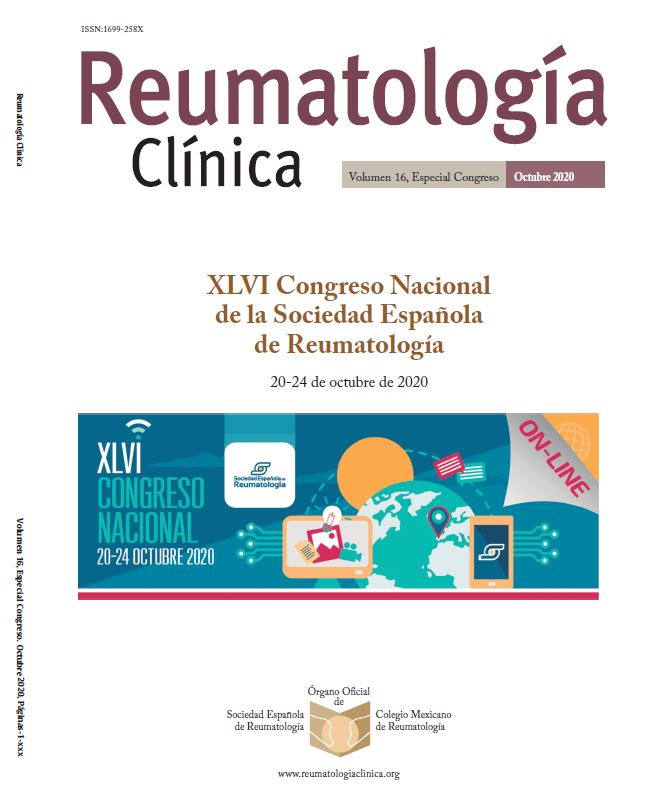P305 - Ultrasound Doppler MASEI Shows Sensitivity To Change After Biological Therapy In Spondyloarthritis And Psoriatic Arthritis Patients
1Hospital Universitario Gregorio Marañón. Madrid. 2Hospital Universitario Severo Ochoa. Madrid. 3Hospital Universitario La Paz. Madrid.
Introduction and objectives: The assessment of activity in spondyloarthritis (SpA) and psoriatic arthritis (PsA) involves several domains, including enthesitis. Clinical enthesitis has shown low sensitivity, specificity and reliability. The MAdrid Sonographic Enthesitis Index (MASEI) is a feasible and reliable ultrasound score, but its responsiveness to treatment has not yet been evaluated. The main objective of this study was to investigate the sensitivity to change of MASEI in active SpA and PsA patients.
Methods: Longitudinal study in patients with SpA and PsA with active disease (defined as patients who were going to start or switch biologic disease modifying antirheumatic drugs (bDMARD) therapy according to physician criteria and in agreement with clinical guidelines). MASEI evaluation was performed at baseline, 3- and 6-months visits. MASEI and Outcome Measures in Rheumatology (OMERACT) enthesitis Power Doppler (PD) definitions were checked. Each enthesis was scanned in both the longitudinal and transverse planes, and 5 second videos were recorded for reliability. An inter-reader analysis by three readers was performed. For statistical analysis t-Student test was used to determine changes between visits and kappa test was used for reliability.
Results: A total of 72 US evaluations of 25 patients were included, of whom 13 (52%) were ankylosing spondylitis (AS) patients, 9 (36%) PsA, and 3 (12%) non radiographic axial spondyloarthritis (nr-axSpA). Mean age was 51.2 ± 14.1 years and 13 (52%) were females. Mean DAS28 (3.5 ± 1.2) for peripheral involvement, mean BASDAI (5.8 ± 2) for axial involvement, and CRP values (13.1 ± 13.6) reflect moderate-high disease activity at baseline. US parameters at baseline and at the 3- and 6-month follow-up visits are shown in the table. Global MASEI score was responsive at the 3- and 6-month follow-up visit (-4.9 and -5.7, respectively) (p < 0.05) and both MASEI and OMERACT PDUS definitions of active enthesitis improved significantly at 3- (-0.6 and -1.1) and 6-month follow-up visits (-0.7 and -1.1) (p < 0.05). Reliability of PD MASEI definition among the three readers was excellent (kappa = 0.918).
|
MASEI evaluation at baseline, 3- and 6-month follow-up visits |
|||||
|
Parameter |
Baseline (n = 25) |
3 months (n = 25) |
Pa |
6 months (n = 22) |
P* |
|
MASEI score |
28 ± 9.3 |
23.2 ± 7.6 |
0.002 |
24.7 ± 8.1 |
0.01 |
|
PD US MASEI score |
1.8 ± 1.3 |
1.1 ± 1.1 |
0.046 |
1 ± 0.9 |
0.004 |
|
PD US OMERACT score |
1.6 ± 1.2 |
0.9 ± 0.9 |
0.024 |
0.8 ± 0.9 |
0.006 |
|
*t-Student test for comparison to baseline. |
|||||
Conclusions: MASEI score significantly improves at 3 and 6 months of follow up in patients under bDMARD treatment and both MASEI and OMERACT Doppler definitions of active enthesitis reflects treatment response. These findings support the usefulness of PD US in the assessment of bDMARD treatment response in SpA and PsA.







